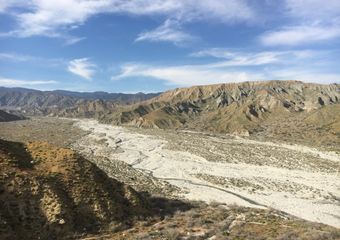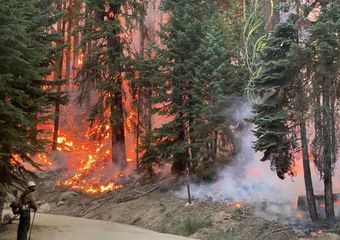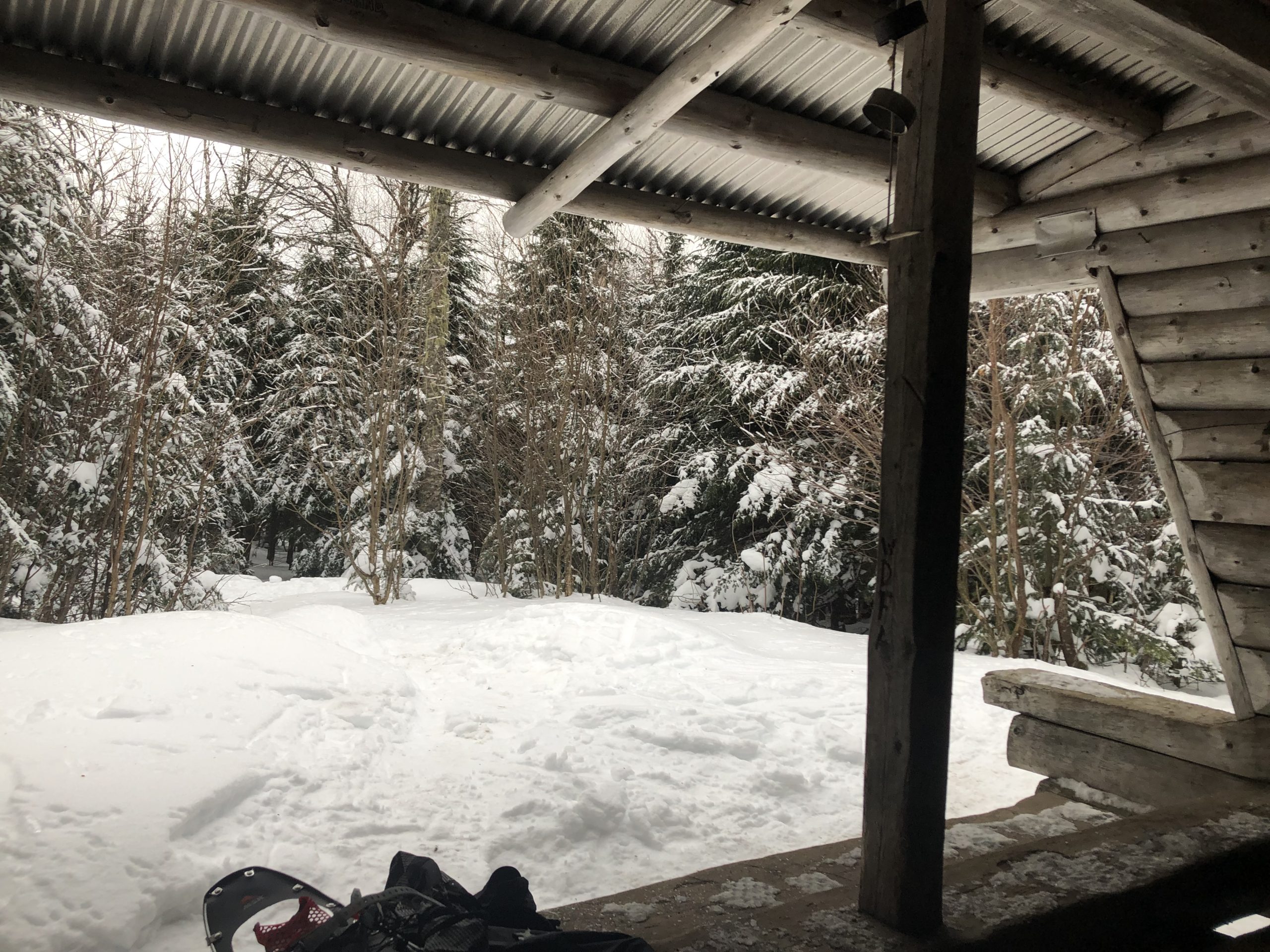How Climate Change Affects Long-Distance Hiking
In the past decade, outdoor enthusiasts have increasingly felt the impact of environmental degradation on our beloved wild places. Climate change is a growing concern, but it can be challenging to understand the phenomenon and its potential impact on the hiking community.
Our society’s most vulnerable populations will be most affected by climate change. This is, of course, far more distressing than any threat to the hiking season.
That being said, climate change will undeniably impact every facet of our lives, including our hobbies and passions. While those impacts will vary in intensity, it is critical that we explore and communicate about them.
Understanding how climate change affects long-distance hiking makes us better, more driven environmental advocates. We can channel our love of the trail to collectively show up for the planet, for vulnerable communities, and for a more hospitable future.
What is climate change?
Despite the term’s recent political charge, scientists have understood climate change since the late 1890s. While Earth’s climate has cyclically varied throughout its history, these climate variations have been on the order of 100,000 years.
In contrast, human activities are driving modern climate change with excessive greenhouse gas emissions (primarily carbon dioxide, methane, and water vapor). These gasses trap the energy of reflected long-wave radiation that would otherwise exit the atmosphere, leading to net warming. In contrast with natural glacial-interglacial climate cycling, human-caused (anthropogenic) climate change began recently, with the Industrial Revolution in the mid-1800s.
What does a warming atmosphere imply?
Ultimately, a less stable climate. The Intergovernmental Panel on Climate Change (IPCC) lists extreme weather events (natural disasters, droughts, wildfires, etc.), sea level rise, and biodiversity loss as among the most pressing climate-related issues of our time.
OK, so what does this mean for long-distance hiking?
Climate change has the potential to devastate vulnerable communities. As a society, we should need no other reason to advocate for climate action. That being said, the late Supreme Court Justice Ruth Bader Ginsburg said it best: “Fight for the things that you care about, but do it in a way that will lead others to join you.”
Our most beloved places and activities are on the line because of climate chanage. As outdoor recreators, we can light the fire of action by understanding how climate change affects long-distance hiking. And make no mistake: dramatic climate action is requisite to preserving the ecosystems, communities, and activities we hold dearest.
Drought
One of the biggest ways climate change affects long-distance hiking is by intensifying droughts. As we know, hiking strips away modern distractions, and our day-to-day involves an acute awareness of the most basic of human needs. Water availability tops this list and is already being dramatically altered.
Although the streams and springs hikers rely upon may seem consistent, their seasonal flow will become increasingly unpredictable. When mountain regions experience smaller-snowpack winters, groundwater tables are not fully replenished, and spring and summer flows are lighter and dry up earlier. This is compounded by the politics of water rights, aggressive water diversions for growing cities, and agriculture-driven depletion.
Those of us who have had grueling 20- or 30-mile water carries acutely understand the impact that reduced water availability will have on backcountry travelers. Seasonal inconsistency will make planning more challenging and unpredictable.
Wildfires

Photo via.
Drought exacerbates another threat to long-distance hiking: wildfires. We’ve witnessed the power of wildfires firsthand in 2020. Dozens of trail sections across the west currently have fire alerts. Many trail organizations have had to introduce alternate routes to avoid closures. Smoke not only obscures hard-earned views but in many places is thick and choking, making hiking unpleasant at best and dangerous at worst.
More than 20% of Australia’s forests burned this summer. California, Oregon, and Colorado are all on track to have record fire years, and nearly every state in the contiguous United States is feeling the impact of the circulating smoke. In 2017, hikers on the Pacific Crest Trail had days where they couldn’t see 100 feet in front of them. NASA even released satellite images illustrating the impact of the fires on the trail.
Although fire is a natural aspect of many ecosystems, intense blazes can wreak havoc. After a fire, downed trees litter the trail. What’s more, the following winter’s precipitation often leads to intense flooding and erosion on the scorched land. Even a single season of intense wildfires can have years of repercussions on the trail.
Wildfire ecology is complicated, but it is undeniable that the suppression of indigenous land management has exacerbated wildfires in the US and beyond. We recreate on stolen land, and while recognizing this is an important step, rightful people-to-land relationships need to inform our advocacy.
Unpredictable Winters
The prospect of intense, unpredictable winters lie on the other end of the climate impact spectrum. But heavy, erratic snowstorms are another way climate change affects long-distance hiking. This year, the earliest snowstorm in a century pushed countless hikers (myself included) off of the Continental Divide Trail and Colorado Trail. This scenario that is likely to play out again and again on many trails in the coming years.
Many of our community’s most tragic losses are a result of snow safety. Inconsistent conditions are likely to bring this issue to the fore. Planning trips around unpredictable winters will be complicated, to say the least. Many hikers will have to reckon with new risk management necessitated by freeze-thaw cycles, avalanches, and the increasing potential for unexpected storms.
Sea-Level Rise & Natural Disasters
Coastal trails, ranging from short gems like California’s Lost Coast Trail to thru-hikes like the Florida Trail and Te Araroa face the most immediate threat from rising sea levels. As our climate warms, large masses of sea ice are melting: the IPCC estimates that sea level will rise between 0.95 feet (0.29m) and 3.61 feet (1.1m) in this century. This means many of our children and grandchildren will literally be hiking through flooded land, if able to hike these trails at all.
Extreme weather events, including hurricanes, threaten many of our communities’ most-frequented trails. In 2017 and 2018, hurricanes Irma and Florence, respectively, struck the Florida Trail and southern sections of the Appalachian Trail. These storms forced hikers to seek shelter and left damage that far exceeded the capacity of volunteer trail crews. Extreme storms cause both an urgent threat to hikers, as well as long-term, expensive damage to trail systems.
Other Impacts
Drought, wildfires, sea level rise, and hurricanes are just a few of the ways climate change affects long-distance hiking. Disease spread and food scarcity, for example, will also impact the hiking community. Shifting climate zones and accelerated spread of invasive species may alter trailside ecosystems. Meanwhile, melting glaciers will recede from some of our favorite mountain views, altering the character of trails around the world. Our connection to these issues, no matter how privileged or removed one might feel (especially while tramping around in the beautiful backcountry), is undeniable.
We have a sacred responsibility to the land and to our communities to advocate for climate action. This crisis will ultimately alter every facet of our world. We share a duty to address these issues quickly, effectively, and through an intersectional lens. This involves engaging diverse stakeholders (especially communities who have historically been disenfranchised and underrepresented); taking local, community-specific action; and voting like our climate depends on it.
Because it absolutely does.
What can I do?
- Vote. If the climate is a priority for you, make your voice heard at the ballot box. Protect Our Winters organizes outdoor recreators to lobby for climate action and has a robust set of resources for those looking to get involved. Check out their Make a Damn Plan voting tool so you, too, can make a damn plan.
- Contact your local representatives. Meaningful climate policy is long overdue. It is your responsibility to ensure your elected officials know what their constituents expect of them. Even if you’re cynical about the political process, single-minded-re-electability concerns can still work to your advantage. Make sure politicians know that you care about the climate.
- Check with trail organizations. Ensure that they are showing up to stakeholder conversations and advocating on behalf of the climate. Our community is large and can be powerful, but we must be sitting at the table for that to matter.
- Consider your own carbon footprint. It’s important to explore our personal impact. For example, meat consumption, home energy use, and transportation are environmentally harmful activities many individuals take part in. That being said, just 100 companies account for 71% of global emissions, so personal action is, unfortunately, simply not a one-off solution.
- Vote with your dollar (for regenerative agricultural practices, renewable energy, and the like) to put pressure on for-profit entities to take climate action seriously. As much as you are financially able, only give your business to companies that work for the environment, not against it.
- Learn and act. Educate yourself, act, learn more, act again, forever. We have a long, important, and uphill battle to undertake.
- Looking for a place to start? Intersectional Environmentalist is a powerful resource for social justice and climate change advocacy.
This website contains affiliate links, which means The Trek may receive a percentage of any product or service you purchase using the links in the articles or advertisements. The buyer pays the same price as they would otherwise, and your purchase helps to support The Trek's ongoing goal to serve you quality backpacking advice and information. Thanks for your support!
To learn more, please visit the About This Site page.







Comments 1
Well written and so important! Climate change is not and should not be political and will impact each one of us. We are all responsible for our beautiful earth!